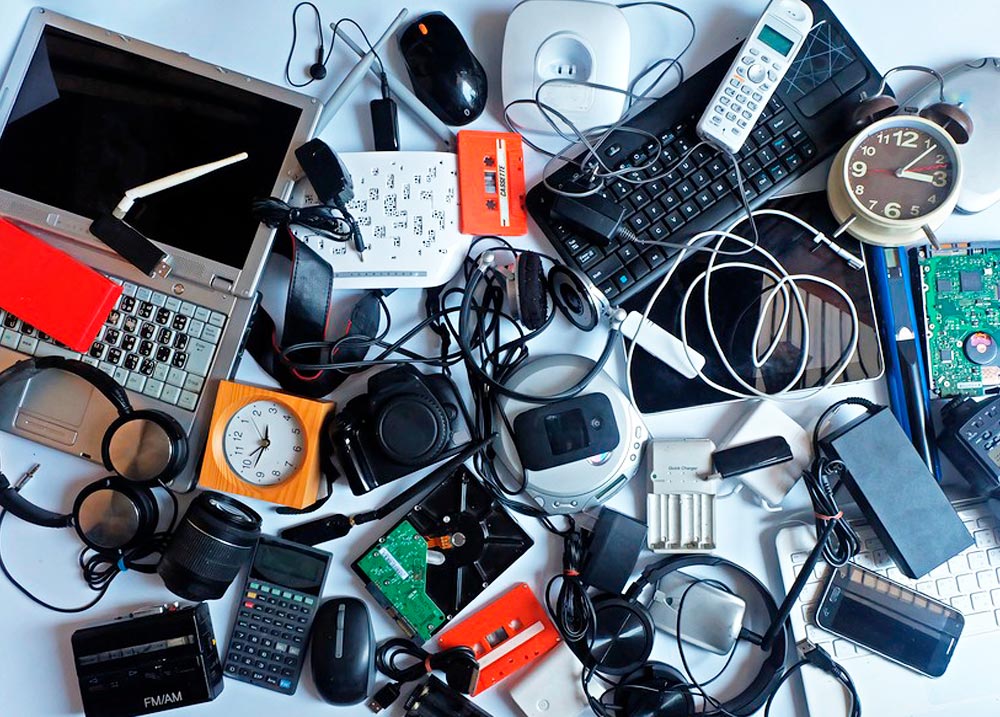In 2022, global e-waste increased by an astonishing 82% compared to 2010 figures, according to presented data. From old cell phones to broken refrigerators and discarded e-cigarettes, electronic waste is reaching alarming peaks, with its growth rate five times higher than recycling rates. This situation brings a host of concerns, spanning health, environmental, and climate issues, as highlighted by a recent analysis.
The numbers revealed are truly staggering. In 2022 alone, the world generated 62 million metric tons of electronic waste, also known as “e-waste,” according to the United Nations’ Global E-Waste Monitor, whose findings were announced on Wednesday (20). To provide a visual perspective, this waste would be enough to fill over 1.5 million 40-ton trucks. If lined up bumper to bumper, these vehicles would form a line so long it could circle the entire globe along the equator.

The term “e-waste” is used as a broad category to describe any discarded product containing a plug or a battery, often containing toxic and hazardous substances like mercury and lead.
With the world increasingly reliant on electronics and with growing quantities being sold in developing countries for the first time, the flow of hazardous waste is on the rise.
According to the report, global e-waste increased by 82% in 2022 compared to 2010 and is projected to grow even further, reaching 82 million metric tons by 2030.
However, recycling capacity is not keeping up. Only a small fraction of the e-waste generated in 2022, about 22.3%, was documented as collected and recycled, the report reveals. Since 2010, e-waste growth has outpaced formal collection and recycling growth by nearly five times, as calculated in the same document.
Most e-waste ends up in landfills or becomes part of informal recycling systems, where pollution risks and harmful health impacts are significant.
Smaller electronic devices, such as toys, vacuum cleaners, and e-cigarettes, face particularly low recycling rates of around just 12%, despite representing about one-third of all e-waste, the report found.
On the other hand, recycling rates tend to be higher for heavier and bulkier equipment like air conditioning units and TV screens due to their size and associated health concerns.
The report projects that collection and recycling rates will drop to just 20% by 2030. Jim Puckett, founder and executive director of the Basel Action Network, an e-waste monitoring group, described the report’s findings as “grim.”
The results reveal a lack of accountability on the part of manufacturers, who are showing “a lack of duty of care” by failing to take responsibility for the fate of their products at the end of their lifecycle, Puckett noted in an interview, though he was not involved in drafting the report.
“Manufacturers need to be forced, against their will, to create durable products,” Puckett stated, emphasizing the importance of designing products not for quick disposal but for a longer lifespan.
Furthermore, manufacturers must establish clear plans for the removal, collection, and recycling of toxic and hazardous parts of their products, Puckett added.
The e-waste problem is not just environmental but also has significant implications for the global climate. Electronic devices rely on raw materials, including rare earth metals, which are extracted and processed through a highly energy-intensive process, predominantly powered by fossil fuels. As demand for these devices rises and people are encouraged to replace them more frequently, the resulting climate impact also grows.
According to the report, proper e-waste management and disposal can reduce global carbon pollution by recovering metals and decreasing the need for new raw material extraction.
“The more metals we recycle, the less we have to mine,” explained Kees Baldé, the report’s lead author and senior scientific specialist at the United Nations Institute for Training and Research.
Recycling metals from e-waste instead of extracting new raw materials helped avoid approximately 52 million metric tons of greenhouse gas emissions in 2022, as highlighted in the report.
More effective e-waste management, especially of devices like refrigerators and air conditioners that release refrigerants such as chlorofluorocarbons, potent greenhouse gases, could significantly reduce the climate impact of this waste.
Additionally, recycling practices can unlock the value stored in these products. The report noted that in 2022, metals worth around $91 billion were embedded in discarded e-waste, including approximately $15 billion in gold.
Despite the growing global concern over e-waste, only 81 countries had specific e-waste policies by 2023, according to the report, including European Union nations and India.
The United States, one of the largest e-waste producers, lacks federal legislation mandating electronic recycling, although some states, like Washington DC, have established their own e-waste regulations.
However, even where specific e-waste laws exist, enforcement remains a significant challenge worldwide, the report’s authors highlighted in a statement.
One of the most crucial approaches to addressing the e-waste crisis is for more developed countries to stop sending their electronic waste to nations lacking the necessary capacity to handle it, Baldé stated.
In low- and middle-income countries, where e-waste—much of it originating from wealthier nations—is often processed through informal and unregulated recycling systems, the impacts on public health and pollution are often severe.
“Simply put, the status quo can no longer be tolerated,” emphasized Baldé. “This new report serves as an urgent call for a substantial increase in investment in infrastructure, promotion of repair and reuse, capacity building, and the implementation of measures to prevent the illegal shipment of e-waste.”

